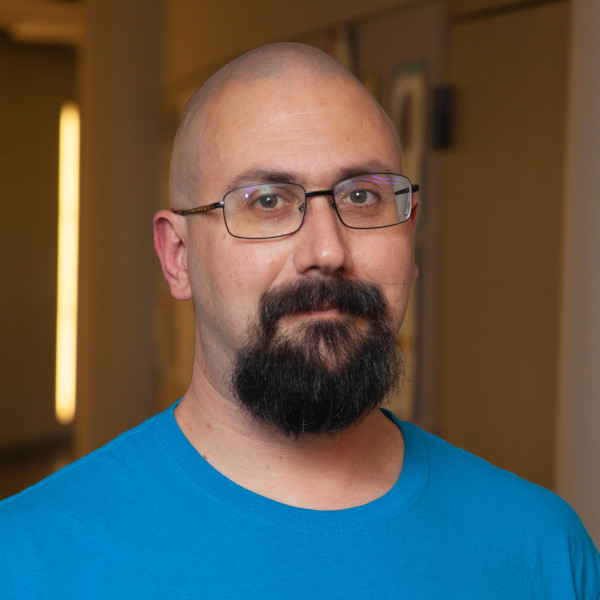
Assistant Professor
Biology
Cohen Science Center Room 231
matthew.jennings@wilkes.edu
(570) 408-4581
- PhD, Biological Sciences | University of Arkansas, 2016
- MS, Biology | Villanova University, 2010
- BS, Biology/Philosophy | University of Scranton, 2005
- Microbial Physiology and Genetics
- Methanogen Physiology
- Biotechnology
- Cave Microbiology
Engineered Living Materials
Engineered Living Materials (ELM) is a type of biotechnology where construction materials are modified by the addition of microbes to add functionality to the material. A material may be modified to provide additional strength, increase its longevity, or add the ability to self-repair in a limited fashion. As a postdoc, I helped develop self-healing coatings (e.g. paint) through the addition of microbes which promote the precipitation of calcium carbonate when damaged. We used microbes isolated from mineral rich environments (caves) which possessed high natural calcification phenotypes. The utilization of cave environmental isolates for this application was a unique approach to ELM, and there is much that can be done to modify and improve the calcification phenotype of these isolates.
Calcification in Escherichia coli
Initial experiments with Escherichia coli demonstrated calcification can be improved through controlled expression and deletion of specific genes. However, we still have only a partial understanding of how metabolic processes impact calcification. I am currently studying the impact of gene deletions on calcification in E. coli to identify genes which are essential to the overall process. We are also studying over expression of these genes to determine if the calcification phenotype can be increased.
Physiology of cave microorganisms
Caves are nutrient and energy poor environments that have high levels of inorganic molecules. Microbes have evolved unique traits to survive in these conditions, however these traits remain understudied due to the difficulty in accessing caves to collect samples, and experiments have been conducted on only a few select isolates. The cave microbes isolated for the ELM project can be used as models to examine how microbes adapt to the unique environment of caves. However, a usable genetic system needs to be developed for these strains before any detailed studies can begin. I am currently trying different systems used for closely related lab strains to determine if they will work in the cave isolates.
- BIO 113: Microbiology
- BIO 326: Immunology and Immunohistochemistry
- BIO 327: Medical Microbiology
- BIO 329: Virology
- Jennings ME, Chia N, Boardman LA, Metcalf WW: Draft genome sequence of Methanobrevibacter smithii isolate WWM1085 from a human stool sample. Genome Announcements 2017, 5(39): e01055-17.
- Jennings ME, Lessner FH, Karr EA, Lessner DJ: The [4Fe-4S] clusters of subunit D are key determinants in the post D-L heterodimer assembly of RNA polymerase in Methanosarcina acetivorans. MicorbiologyOpen. DOI: 10.1002/mbo3.399. 2016.
- Jennings ME, Schaff CW, Horne AJ, Lessner FH, Lessner DJ: Expression of a bacterial catalase in a strictly anaerobic methanogen significantly increases tolerance to hydrogen peroxide but not oxygen. Microbiology 2014, 160(Pt 2):270-278.
- Lessner FH, Jennings ME, Hirata A, Duin EC, Lessner DJ: Subunit D of RNA Polymerase from Methanosarcina acetivorans Contains Two Oxygen-labile [4Fe-4S] Clusters: IMPLICATIONS FOR OXIDANT-DEPENDENT REGULATION OF TRANSCRIPTION. Journal of Biological Chemistry 2012, 287(22):18510-18523.
- Jennings ME, Quick LN, Ubol N, Shrom S, Dollahon N, Wilson JW: Characterization of Salmonella Type III Secretion Hyper-Activity Which Results in Biofilm-Like Cell Aggregation. PLoS One 2012, 7(3):e33080.
- Jennings ME, Quick LN, Soni A, Davis RR, Crosby K, Ott CM, Nickerson CA, Wilson JW: Characterization of the Salmonella enterica serovar Typhimurium ydcI gene, which encodes a conserved DNA binding protein required for full acid stress resistance. J Bacteriol 2011, 193(9):2208-2217.
- Breley GJ, Jennings ME, Gisser K, Drabik A, Kainrad J, Barton HA: Techniques for Quantifying Bacterially Induced Carbonate Mineralization in Escherichia coli. Geomicrobiology Journal. 2022. DOI: 10.1080/01490451.2022.2115169.
- Tantisuwanno C, Dang F, Bender K, Spencer JD, Jennings ME, Barton HA, Joy A:Synergism between Rifampicin and Cationic Polyurethanes Overcomes Intrinsic Resistance of Escherichia coli. Biomacromolecules. 2021. DOI:10.1021/acs.biomac.1c00306.